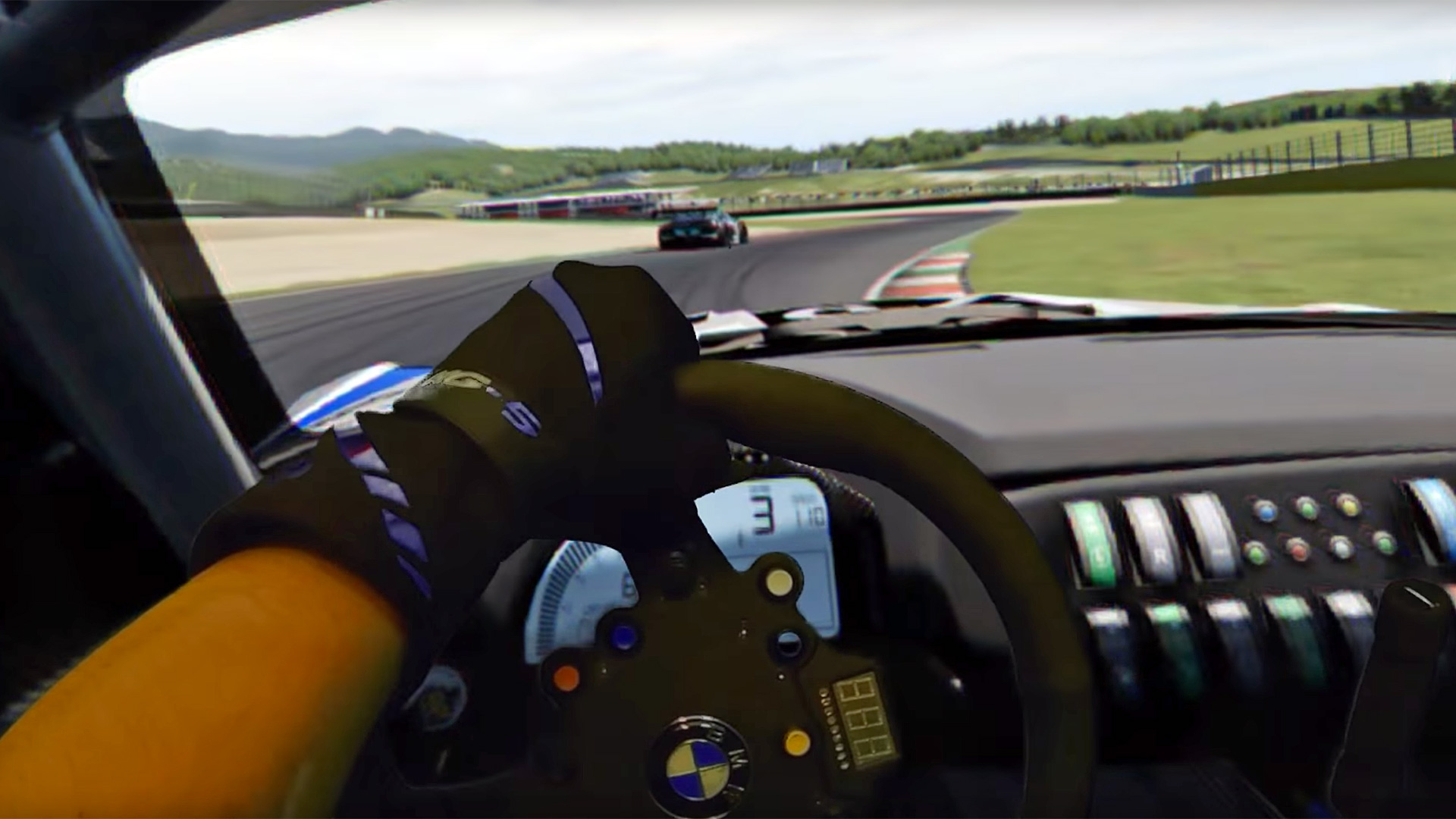

If you believe the hype, the three future interfaces are virtual reality (VR), augmented reality (AR), and mixed reality (MR). Virtual reality is entirely fabricated – that world consists solely of pixels. Augmented reality is virtual information like data or an animation laid atop a view of the real world – think Google Glass. Mixed reality is a virtual overlay that you can interact with, supposed to be the best of combination of VR and AR. If you believe the proponents of mixed reality, MR is the truth, the rest is obsolete or semantic quibbling.
The real point is this: MR looks amazing even when it’s being used to showcase a related technology. A track rat and gamer named Marcel Pfister made a mixed reality video to demonstrate using the Oculus Rift DK2 virtual reality headset in a racing game. “It’s very difficult to show someone that hasn’t tried Virtual Reality before how incredibly awesome it is,” he told The Drive. “Sim racing and PC gaming is a hobby, and I like to make videos about my real life driving, so I thought it would be great to combine it with something in a way that no one has seen before.”
Pfister used the chroma keying technique employed by tons of Hollywood movies. He set up a fully enclosed green screen cave in his apartment – he said his friends called it “the fap cave” – with a chair and a Fanatec wheel and pedal set inside. He played Assetto Corsa on his PC through the Oculus Rift, while a GoPro attached to the VR headset captured footage of his hands on the Fanatec wheel (the footage inside the VR headset doesn’t capture the steering wheel). Then he spent four hours editing, to lay the footage captured in the VR headset on top of the green screen and make sure everything synced up. The result is that it feels like you’re in the driver’s seat trying to qualify for a GT3 race. If there’s a better ad for virtual reality racing, we haven’t seen it yet.

Pfister’s homebrew effort served as a demonstrator for virtual reality, but a gaggle of companies has invested huge lucre in mixed reality on its own, and in realms far beyond gaming. An exhaustive segment report predicts MR applications in a huge swath of industries from military “Battlefield Information Display” to aerospace and manufacturing. There are high-level seminars online discussing how MR will affect computation and design. Object Theory develops software to unite distant parties inside mixed reality environments with the Microsoft HoloLens and Microsoft Holographic. NASA will use the Microsoft HoloLens to take guests at the Kennedy Space Center on a tour of Mars with astronaut Buzz Aldrin this summer. And venture capitalists threw more than $1.4 billion – so far – at the intensely secretive MR company Magic Leap.
Educational forays could be a big opening for MR, too. A UK company called Curioscope recently completed a successful Indiegogo campaign for its Virtuali-Tee mixed reality learning app. Point an app-enabled device at someone wearing the Vituali-Tee shirt, and you get an interactive view of the inside of the human body. Plug a VR headset into the app-enabled device, and you can take the old Fantastic Journey inside the human body but without the life-or-death consequences and Raquel Welch.
Caveat emptor: VR has hung around the periphery of consumer awareness for two decades and not gone anywhere. Even if modern computing power and devices mean you can add real life scenes to a virtual world, what are the gotta-do-it activities that will entice mass adoption?
Ed Barton, CEO of Curioscope, told The Drive, “AR has largely been a marketing gimmick so far and VR has only really found use cases in the enterprise, industrial and, recently, the gaming space. To be a truly impactful medium it has to go beyond this, into every industry and environment in the world. We are probably still a few years off this but I’m confident that mixed reality will be the dominant medium in 5-10 years.”
Barton believes that within a decade our living and working spaces “will all be constructed with virtual screens” that enable MR – a view the CEO of Magic Leap also shares. Barton sees healthcare as another obvious avenue. “For patients to be able to actually understand what’s wrong is a great development in patient care,” he said. “VR is also, already, having a proven impact in pain relief.”
The headsets and the technology are coming, that is certain. Now we need to wait for content developers to populate the retail landscape with awesome uses. Until that happens, you’ll find us over at Marcel Pfister’s “fap cave” on VR Assetto Corsa, trying to qualify on pole.